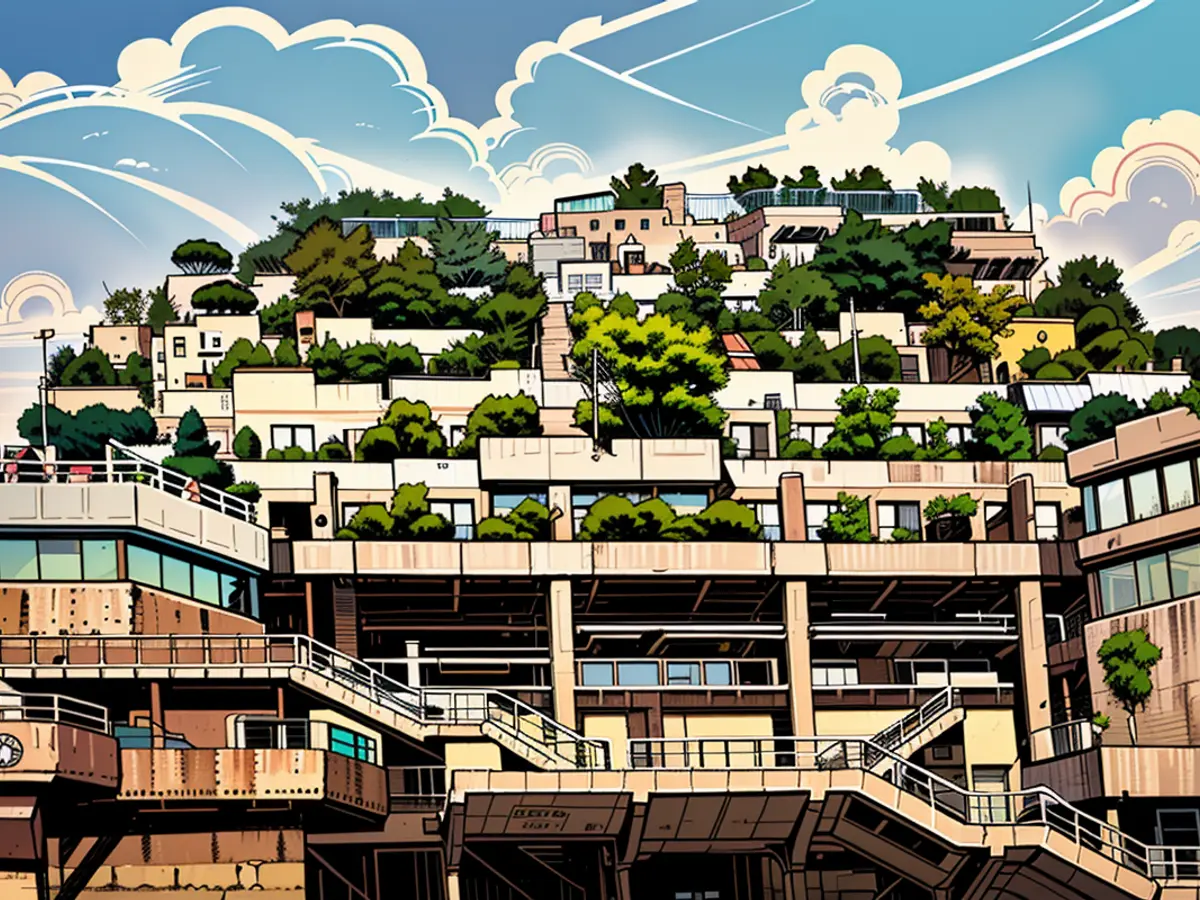Architecture - "Life in the bunker" - Green Hamburg bunker open to all
Overview of Hamburg: Much Green and Various Catering Offers: The revamped St. Pauli High Bunker is now open to all visitors and guests. "At 9:00 am, the cross was opened and the people streamed upstairs," said a spokesperson on a Friday afternoon. Many ran up the so-called mountain path and visited the cafes. "Life is back in the bunker now."
For safety reasons, there will be a limit to the number of visitors, as the responsible parties announced. "The maximum number at the rooftop garden is 900 at the same time." This will be controlled. Different summer and winter opening hours are planned. In the warm months, the rooftop garden can be explored from 9:00 am-9:00 pm.
Originally built by forced laborers
The originally 38-meter-high Flak bunker, which was built in 1942 by forced laborers, was raised by five additional floors to 58 meters and extensively planted. The rooftop garden with 4,700 plants is accessible from the outside through airy heights over the so-called mountain path, which is also lined with many plants, shrubs, and trees. The roof and facade greening of the World War II building is considered a natural climate control system.
Hamburg's Senator of Finance Andreas Dressel (SPD) described the renovated building at the official opening ceremony on a Wednesday evening as a "project of global impact." "A dark chapter of German history is turning into a friendly, bright, lively place," said the private investor, builder Thomas Matzen. During the 2019 construction work, there were delays. Approximately 60 million Euros are said to have been spent on the upgrading and greening of the colossus next to the Millerntor Stadium, according to reports by the end of 2023.
Hotel, Bar, Cafe, Restaurant
In the new section, the Hotel Reverb by Hard Rock, according to management, has 134 rooms ready for its guests. Visitors to the bunker can enjoy drinks, snacks, and music in the bar "Karo & Paul" on several floors. The café "Constant Grind" and the restaurant "La Salsa" with show kitchen will also welcome guests. In the "Rock Shop" in one of the former Flak turrets, not only numerous souvenirs can be bought, but also readings and small concerts are planned. A new multi-purpose hall can be used for sports and cultural events.
Part of the concept is also a memorial and information center, which is intended to remind of the history of the building. The bunker was supposed to serve primarily as a Flak defense during World War II, according to the information on the building's website. "Sources show that during the bombing of the city of Hamburg, at times up to 25,000 people found shelter in the bunker."
- The renovated St. Pauli High Bunker, a significant architectural transformation, boasts a rooftop garden filled with 4,700 plants, providing a breathtaking panoramic view of Hamburg.
- Alongside the historical importance of the bunker, constructed during World War II by forced laborers, it also serves as a hub for various catering offers, including a hotel, bar, cafe, and restaurant.
- Nature and construction harmoniously coexist in this unique site, as plants, shrubs, and trees line the mountain path, contributing to the roof and facade greening, serving as a natural climate control system.
- Tourists in Hamburg can visit the St. Pauli district and appreciate the miscellaneous attractions it offers, such as the revamped bunker, blending history with gastronomy and architecture.
- The rooftop garden, accessible to 900 visitors at a time, offers a serene escape from the city's buzz, providing an ideal vantage point to enjoy the beauty of nature and the panoramic view of the city.
- The High Bunker, now a lively part of Hamburg's St. Pauli district, stands as a testament to nature's integration into urban construction, located adjacent to the Millerntor Stadium, a popular destination for sports and culture enthusiasts.






